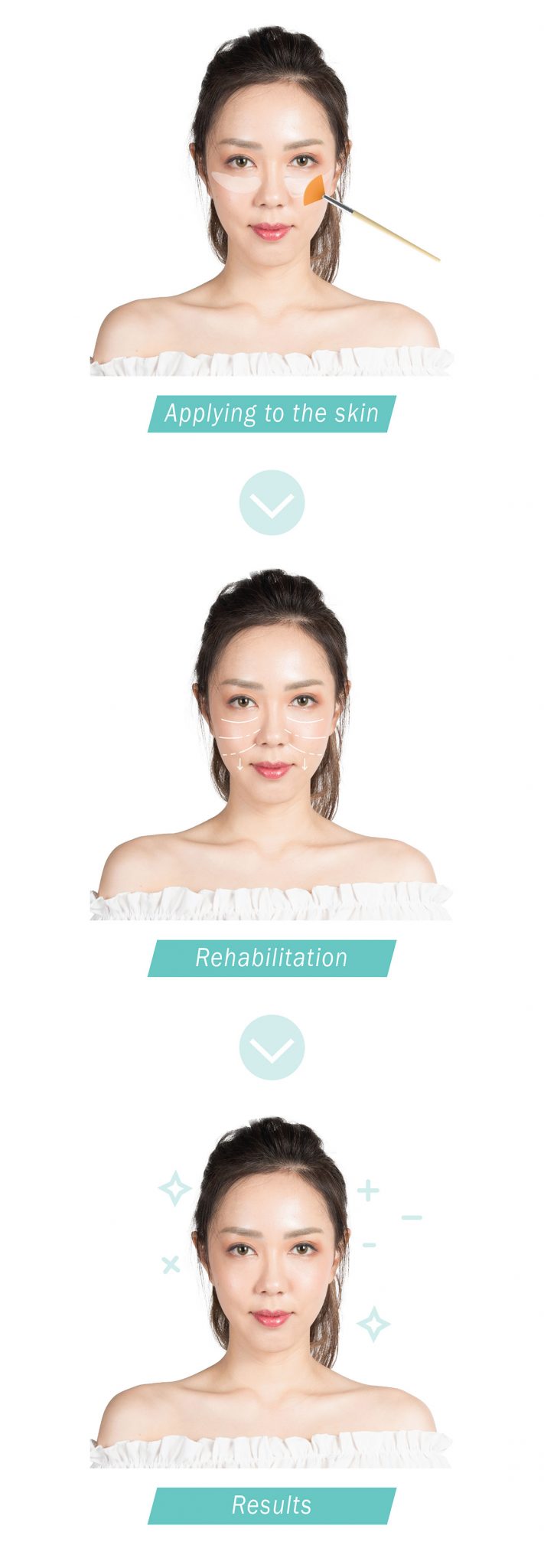


A chemical peel is a technique used to improve the appearance of the skin on the face, neck or hands. A chemical solution is applied to the outer skin that causes it to exfoliate and eventually peel off. This stimulates the cells below to multiply and increase collagen production. The new, regenerated skin is usually smoother and less wrinkled than the old skin. The new skin is also temporarily more sensitive to the sun.
After a session of chemical peeling, skin care products absorb better because there are no dead cells impeding their penetration.
How is chemical peeling performed?


After a session of consultation, your face is cleansed. Numbing cream may be applied, if necessary. The chemical peel solution is then applied. The solution used is selected according to each client’s specific needs and goals. It is common to feel a tingling or stinging sensation as the chemical peel is applied. During this period, a device will blow out cool air over your face, considerably reducing the sting and a cold, soothing ointment will be applied upon completion to help with the cooling.
Additional layers of the chemical peel may be applied depending on your skin type, condition and desired outcome.
Are chemical peels painful?
Chemicals peels sting but do not cause a great deal of pain. Here at Clinic RX, we use a range of superficial peels and occasionally trichloroacetic (TCA) peels when stronger peeling is required. TCA peels can remove superficial blemishes and pigment problems. Superficial peels may cause result in mild tingling or stinging. TCA peels may cause stinging, redness, irritation and crusting. However, any discomfort is temporary and very tolerable as the peel is neutralized after 3 minutes.
When is a chemical peel appropriate?
Chemical peels are used to treat a number of conditions including:

Acne / Acne Scars

Aging Skin

Fine Lines

Hyperpigmentation

Sun Damaged Skin

Melasma

Pores
What are the potential side effects of a chemical peel?
Chemical peels rarely result in serious complications, but certain risks do exist. These risks include scarring, infection, swelling, changes in skin tone, and cold sore outbreaks. You can reduce the risks associated with facial peels by following all of the doctor’s instructions completely and by providing your doctor with a complete medical history.
How many sessions are required?
Most individuals require a series of 2-4 peels but this is dependent on the client’s initial condition as well as the desired outcome. A consultation is recommended to determine the suitable number of sessions needed. Each session should be spaced 4 weeks apart.
What can I expect after having a chemical peel?
All peels require some follow-up care:
Generally, after one session of chemical peeling, you will need one to seven days to heal completely. Treated skin will initially be red and may scale. Lotion or cream should be applied until the skin heals, followed by daily use of sunscreen. Makeup can usually be applied the next day.
Sun exposure, smoking and the use of whitening products after a chemical peel must be avoided because they can cause unwanted side effects, including infection and scarring.




